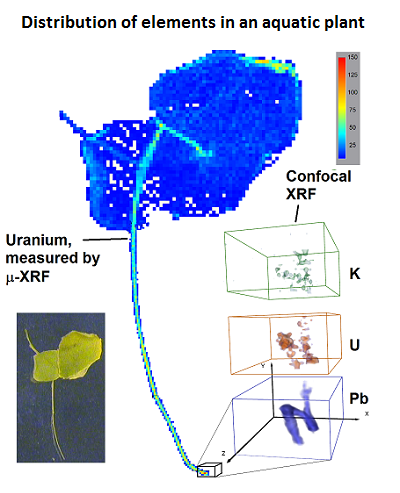5.2 Spatially resolved elemental distribution: element mapping

The spatial distribution of elements often brings useful information to support different studies. The first maps of elemental distribution were obtained by SEM-EDS, where the measurement is conducted by scanning the sample surface with the electron beam.

Some XRF techniques that can be implemented without the need of large excitation sources have become popular in the last decade by providing a non-destructive insight into the distribution of elements in the surface of objects or in some cases across the whole volume of minute and light samples.
The latter has been possible due to the innovation and production of novel x-ray optics focusing devices (such as capillary, poli-capillary, Khumakov lenses and Fresnel zone plates) and more recently the development of pixelated, energy sensitive Charge Coupled Detectors (CCDs).
The spatial resolution of these techniques is ultimately determined by the focus spot size of the x-ray optic elements or in the case of using CCD detectors by the pixel size.